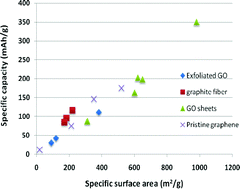Herein reported is a fundamentally new strategy for reviving rechargeable lithium (Li) metal batteries and enabling the emergence of next-generation safe batteries featuring a graphene-supported Li metal anode, including the highly promising Li–sulfur, Li–air, and Li–graphene cells with exceptionally high energy or power densities. All the Li metal anode-based batteries suffer from a high propensity to form Li dendrites (tree-like structures) at the anode upon repeated discharges/charges. A dendrite could eventually penetrate through the separator to reach the cathode, causing internal short-circuiting and even explosion, the main reason for the battery industry to abandon rechargeable lithium metal batteries in the early 1990s. By implementing graphene sheets to increase the anode surface areas, one can significantly reduce the anode current density, thereby dramatically prolonging the dendrite initiation time and decreasing the growth rate of a dendrite, if ever initiated, possibly by a factor of up to 1010 and 105, respectively.

You have access to this article
 Please wait while we load your content...
Something went wrong. Try again?
Please wait while we load your content...
Something went wrong. Try again?


 Please wait while we load your content...
Please wait while we load your content...